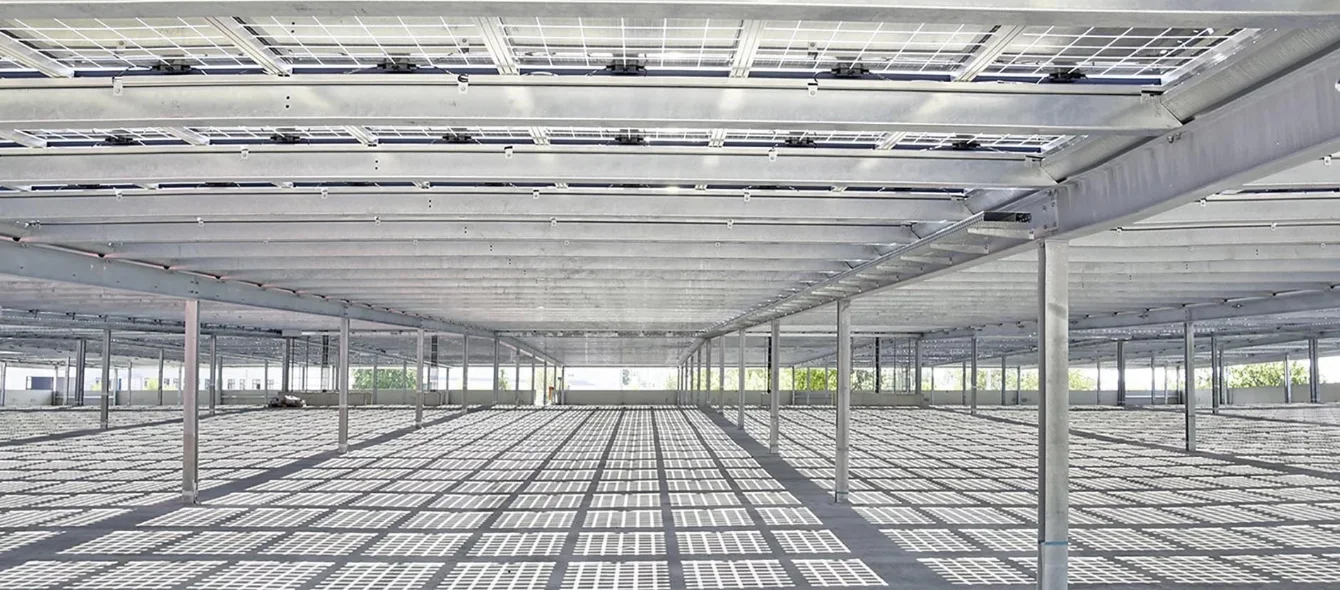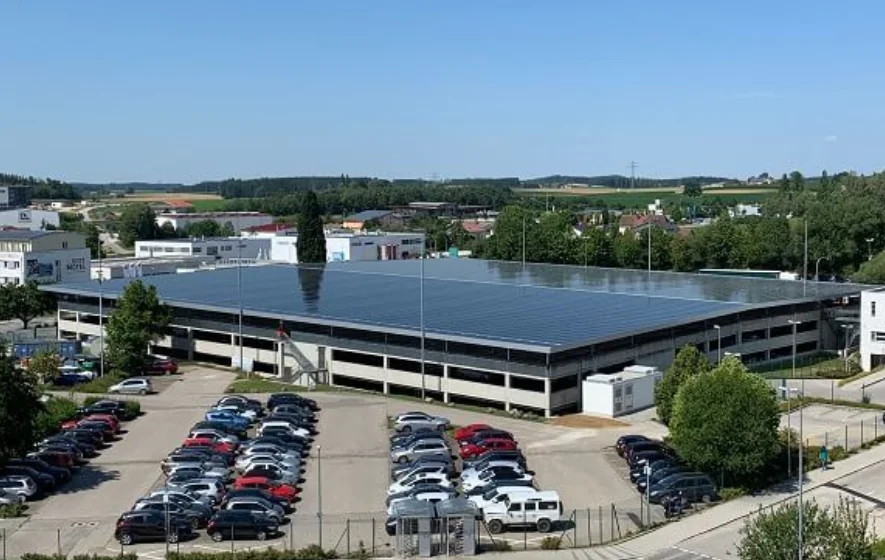According to the International Energy Agency (IEA), electricity from solar has “never been cheaper” to produce. In fact, no other energy source is currently able to produce power for less. What’s more, the systems are based on versatile tech. Solar modules have found their way onto rooftops, fields and even lakes and developers are constantly coming up with still more areas to use photovoltaics. In its new series, en:former will be shining a light on these innovative projects.
In Lower Bavaria, a solar plant like no other went into operation in late-2020. At 7,000 square metres, Germany’s largest in-roof PV system, was installed in the car park of automotive supplier Dräxlmaier’s Vilsbiburg site. Not only does the system boast a capacity of 1.28 megawatt hours (MWh) of power, it also signifies a new take on PV – because the solar modules are not simply attached to the roof, they are the roof. In fact, the transparent construction is a real eye-catcher.
Durable glass modules
A total of 4,200 so-called glass-glass modules from German PV specialist Solarwatt have been installed as roofing. These modules consist of sensitive solar cells that lie between two panes of glass, protecting them from the elements. Solarwatt offers a performance warranty of 30 years and the systems can also easily be mounted directly onto the roof battens. Extensive building renovations and new builds seeking low-cost alternatives are prime candidates for these ‘integrated solutions’, as they save on roof tiles and halve the labour costs.
The solar cells don’t just generate electricity when hit by the sun’s rays. When the light dances over the floor of the top deck at the Vilsbiburg car park, it also creates a chequerboard pattern. “This lets the users see sustainable electricity generation in action,” writes Rudolf Hörmann GmbH & CO. KG, the construction company responsible for the build.
According to the Allgäu-based company, solar roofs such as the one in Vilsbiburg boast even more advantages. In summer, they provide welcome shade and protect the cars from overheating, whilst allowing enough light to pass through – so no artificial light needed during the day. In winter, they protect against storms and snow – so no need for winter maintenance, either.
Electricity for e-cars
The Draexlmaier Group uses the solar power from its PV system for the day-to-day running of its headquarters. 350 charging stations for electric cars were also installed during the build. Moving forward, company cars and private vehicles will be able to charge here. “The new facility will save around 560 tonnes of CO2 annually,” calculates Managing Director Fritz Dräxlmaier.
The owner of the largest rooftop PV system in Europe also happens to be in the automotive industry. Audi had an XXL solar facility built onto two of its logistics halls in Hungary, which went into operation in October of 2020. 35,000 modules, albeit not integrated cells, were installed spanning a total area of 160,000 square metres. The total capacity comes to 12 MW or more than 9.5 gigawatt hours (GWh) of electricity per year. Enough to supply 5,000 households annually.
Photo credit: Hörmann GmbH und Co. KG

